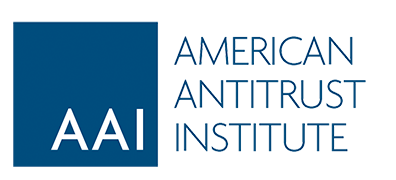On April 24, 2023, the Ninth Circuit issued an opinion largely upholding the district court decision in Epic v. Apple. Although the decision is overall disappointing for antitrust enforcement, it also provides important corrections to some of the district court holdings, including points addressed in AAI’s amicus on appeal. We summarize both aspects of the opinion below.
There are considerable downsides in the opinion for antitrust enforcement efforts, especially in the tech space, where it has the potential to increase the evidentiary burden on plaintiffs in significant ways. Following are major takeaways from the opinion.
- Single-brand relevant market: The opinion affirms a high bar for showing a “single-brand” relevant market. The Ninth Circuit adopts a reading of the Supreme Court’s Kodak case that requires the plaintiff show that restrictions are not “generally known” by customers before they make their purchase and provide evidence of the “magnitude” of the switching costs. The Court agreed with the district court that Epic failed to provide sufficient evidence on these points. This articulation of “required” showings is particularly important for enforcement in the tech space. Being able to show a single-brand market is vital in a space where a small number of large tech companies have created broad, multi-level proprietary ecosystems to protect their market positions.
- Less restrictive alternative standard: The opinion describes a relatively onerous standard for plaintiffs to rebut a claimed procompetitive benefit by showing a less restrictive alternative. The Ninth Circuit finds that plaintiffs’ proposed alternative must be “virtually as effective in serving the defendant’s procompetitive purpose” as the challenged restriction. This demanding standard led to leaving in place the district court’s rejection of Epic’s alternative even though it was based on a system Apple already had in place for its computer-based app distribution. This part of the opinion may have the most significant negative consequences for future enforcement, especially in the tech space where the knowledge and evidence of available alternatives is likely to lie with the defendant and there may be unresolvable uncertainty about how alternatives could be implemented.
There are, however, also some important bright spots in the opinion. The Ninth Circuit corrected mistakes of the district court that would otherwise have been a significant step backwards for antitrust enforcement in the tech sector. This did not affect the outcome of the case, however, as the panel found these mistakes to be harmless, given the other facts.
- Contract under Section 1: The Court rejected the district court’s notion that a contract willingly entered into by plaintiff was not a contract covered by Section 1. The Court followed other precedent and affirmed that Section 1 covers every contract, even if a plaintiff had begrudgingly accepted the restrictive terms.
- Market definition: The Court rejected the district court’s holding that a product market must be defined around a product that the defendant licenses or sells. Instead, the Court affirmed that market definition must be based on market realities, and could include, for example, markets based on products that are free or “vertical” products.
Although this view is consistent with other precedent, it is an important point for tech markets, where products are often offered for free to one side of the market in exchange for access to data.
- Two product requirement for tying claim: The Ninth Circuit rejected the district court’s conclusion that Epic failed to show that there were two different products for purposes of a tying analysis. The Ninth Circuit here was consistent with AAI’s arguments in its amicus. It further helpfully emphasized that the burden for this showing should be light because it is only a preliminary question, not the substance of the analysis.
- Scope of Ohio v. Amex: The opinion finds that the district court took the analysis of Ohio v. Amex too far when it claimed that a two-sided market could not be broken up into multiple products for purposes of an antitrust analysis. The circuit court instead emphasized the need to consider market realities in platforms just as in other areas. The Ninth Circuit’s conclusion here seems to have stemmed some of the overbroad readings of Ohio v. Amex that could have led to immunizing a broad swath of platform conduct. This is consistent with AAI’s amicus arguments. Compared to the approach advocated by AAI, though, the Ninth Circuit missed an opportunity by not going further in cabining Amex than it did.
- Need for balancing test under rule of reason: The Ninth Circuit agreed with Epic and several amici that precedent requires a balancing of procompetitive and anticompetitive effects, even if plaintiff does not offer sufficient proof of a less restrictive alternative. The benefit of the holding is dampened, however, because it is clear the Court is dubious that adding a balancing test will change the outcome in any similar situation and seems to suggest that the last step is a matter of form rather than substance.
Finally, the Court raises the important question of whether cross-market rationales (i.e., weighing benefits in one market against harms in another) are cognizable. It seems to be leaning in favor of allowing such rationales based on precedent but sidesteps the issue in Epic v. Apple by finding instead that the harms and the benefits are in the same market. As a result, it leaves that question for another future case.
In short, the Ninth Circuit’s decision reins in some of the pro-defendant excesses of the district court decision against Epic, but it leaves intact questionable standards that can increase the challenges faced by plaintiffs in similar cases. Hopefully, future decisions will be clearer about the limits, not just the lower bounds, of what showings are required of plaintiffs.


